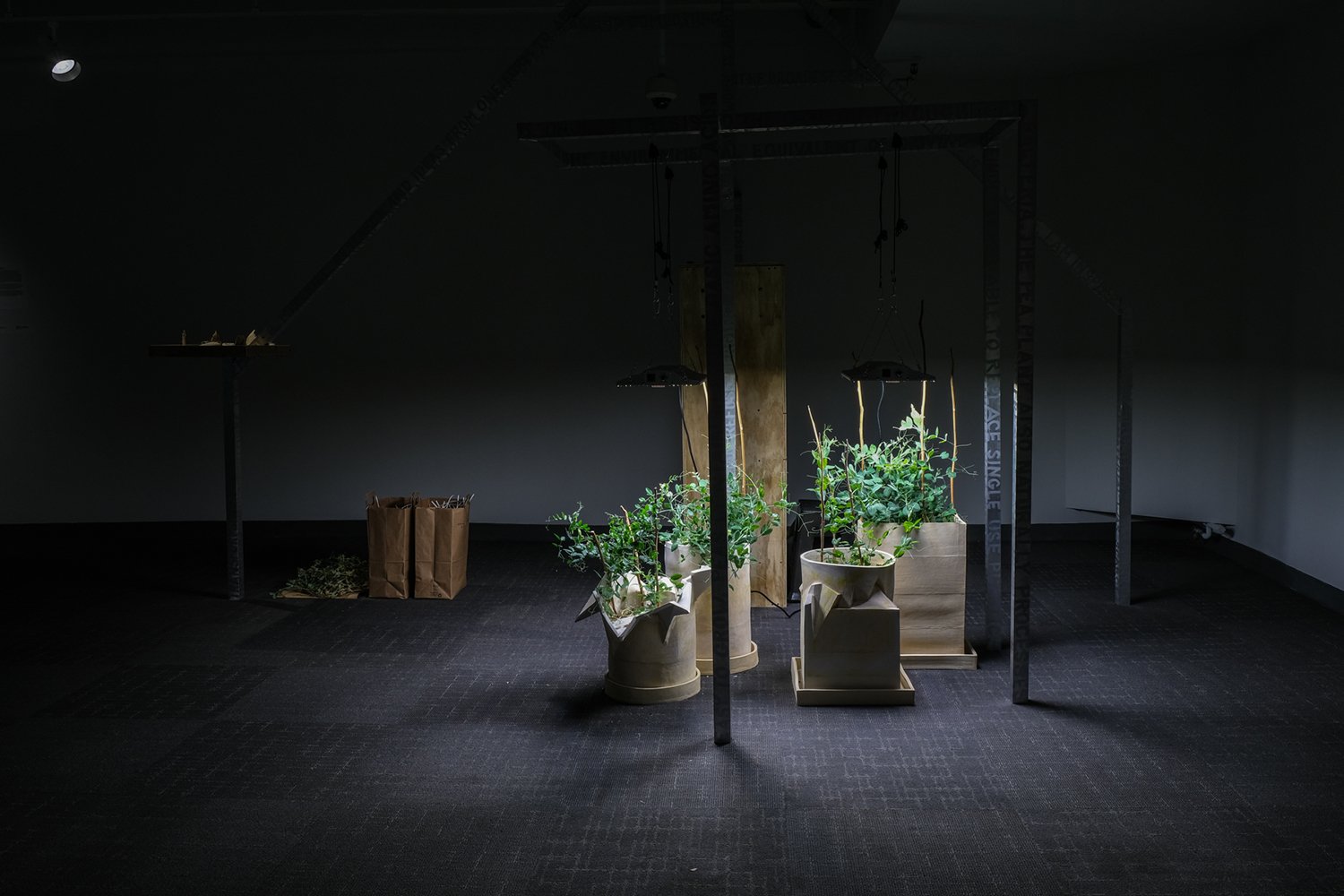It can be exhausting to continuously dwell on discussing how the pandemic has hindered or completely halted the familiarity of our everyday routines, impacted how we attend events, sustain careers, and maintain relationships. As a change of pace, focusing on the positives allow us to celebrate the successes born out of the two-year hiatus brought on by the global Covid-19 pandemic.
The exhibition Reimagining the Global Village culminated after two intense years of planning and organization by curator Nirmal Raja. This exhibition triumphs the toils of the pandemic and celebrates powerful networks of artists with collaborative practices that deserve recognition. Opening at the Milwaukee Institute of Art & Design’s Frederick Layton Gallery in October, the exhibition showcases artwork created by collaborative artist duos, transnational partnerships between artists and communities, and global artist collectives. The pieces in this exhibition are striking, challenging, and significant creations that speak to themes like climate change, immigration, refugees, women’s rights, and transnationalism. More than 30 artists in this exhibition cast a wide geographical net, representing 18 different countries. The resulting installation of work includes not only a diverse selection of artists, but also displays a range of varying media, from film and photography to interactive, wearable art, tapestries, and a living sculpture.
The exhibition is curated into three sections. The first highlights artist to artist collaborations, with each pair representing two different countries. The origin stories for the artist duo varies, but each relationship remains equally intriguing. Milwaukee artist, Jill Sebastian, and collaborator, Liz Bachhuber, who lives in Germany met in graduate school in the 1980s. They remained in touch over the years, however, didn’t have a chance to share common interests in production until very recently. Their work in Reimagining the Global Village is a large walk-in installation filled with ceramic planters that are growing snow peas. The ecosystem also includes a compost bin of worms that feed on recycled notes and correspondence between the artists. The worms are working to create the soil in which the peas are planted. The grown peas are then harvested and used to make paper. The paper is then used by the artists and the cycle is completed. The installation is a physical life cycle that comments on environmentalism and consumerism. Liz and Jill are pointing out the footprint, resources, and production necessitated by store-bought art materials like paper. The functioning ecosystem is highly impactful within the gallery and leaves space for the viewer to consider sustainable practices and environmental impact.
Jill Sebastian and Liz Bachhuber, Eat My Words, 2021, Repurposed aluminum/composting site, 12′ x 6-8′ wide walk-in structure, photo by Robb Quinn.
The second section of the exhibition is dedicated to artists working with communities. Pamela Longobardi collaborated with refugees in Lesvos, Greece to collect and repurpose the skins of discarded life vests that washed ashore during the global refugee crisis in 2015-2016 when over 500,000 migrants flooded the island. The result is a nearly 8’x11’ grid-like flag, of which one can recognize the straps, sun discoloration, and text from the discarded life vest materials. The flag is described by curator Nirmal Raja as, “an object that calls attention to something urgent.” In her work, Pamela employs collective art activism to address global climate change and the over-abundance of plastic waste. Pamela utilizes the completed flags in guerilla performances with semaphore–visual signals used by the Navy–to call attention to climate change.
Pamela Longobardi, Night Flag of Lesvos (Soteria), 2019, Recovered life vests from Lesvos, Greece, wood, 103” x 135”, photo by Robb Quinn.
Global artist collectives are highlighted in the third section of Reimagining the Global Village. The Global Art Project (GAP) consists of 64 members across 17 countries who work collaboratively to make mixed media artworks. The GAP’s installation in the exhibition is a selection of these works. Fragments also known by the collective as “frags” are collage materials, detritus, newspaper or magazine clippings, scraps of paper, old receipts and other raw studio substances. These “frags” are mailed across borders for members to use in their contribution to a collective artwork. Founder Carl Heyward explains that the pandemic had a positive impact on the Global Art Project when they received more social media attention than ever before. Artist members from GAP have embraced connecting virtually with one another all over the world. While the completed works from the Global Art Project challenge notions of authorship and ownership, members have deepened their connections and strengthened their personal networks through participating, a true sign of a global village.
Installation by Global Art Project, works by participating artists, photo by Robb Quinn.
Nirmal Raja’s thoughtful and extensive curation of Reimagining the Global Village is felt far beyond the gallery walls. The exhibition is accompanied by a comprehensive website and YouTube channel where viewers can explore additional content about the artworks and artists. Connecting within and beyond one’s community will continue to be the key to raising awareness about current cultural topics. I know the collaborators in this exhibition will proceed to exercise their artistic voices by reinventing how we interact with the world. As Nirmal describes it, this exhibition highlights “artworks made disregarding boundaries of any kind.”
Reimagining the Global Village is on view at the Milwaukee Institute of Art & Design’s Frederick Layton Gallery through December 4, 2021. The exhibition is sponsored by Fiserv.






